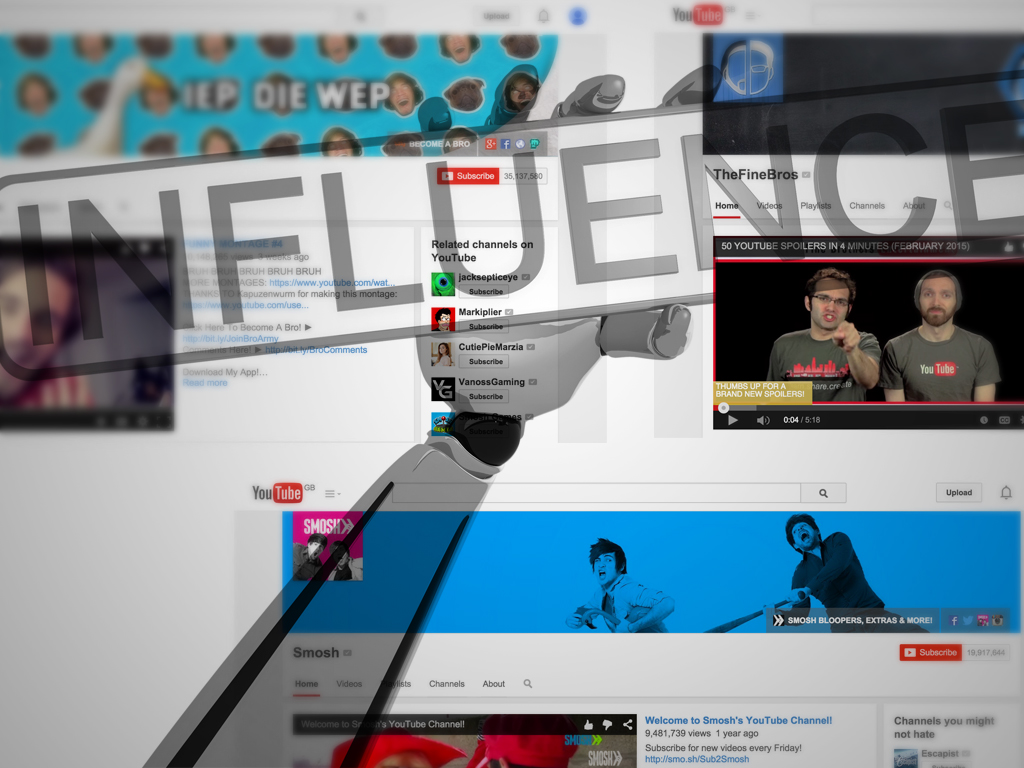In 2016, the question won’t be if your company needs to allocate budget for influencer marketing, it will be how much. In 2015 we saw brands of all sizes truly start to embrace and understand the power of influencer marketing, and this is just the beginning.
As you look to 2016, here are the reasons why you need to have an influencer marketing campaign in place to help your business and marketing goals.
Traditional Media Is Dying
We’ve all heard of the number of people ditching cable providers and statistics show that this is the most evident with the millennial age demographic. In Q3 of 2015 alone, over 190,000 cut the cord up from 155,000 in Q3 of 2014.
Looking at Generation Y (13–24 year olds) this only becomes more prevalent with 96 percent of their generation consuming online video on YouTube and other social media at a clip of 11.6 hours per week. This is compared to 81 percent of millennials watching broadcast TV at 8.3 hours a week.
Millennials want high-quality content, they want it accessible anytime and anyplace and at the cheapest price possible. Put simply, this means less eyes on traditional media and more eyes on creator-generated content and social media.
In turn, this makes YouTube a really valuable tool for brands. Not only is YouTube the third most trafficked site in the world, it is also the second largest search engine behind Google. Some would argue it is the first place millennials go to research or discover new products.
If your brand continues to ignore this, I can guarantee your competition won’t. I can also guarantee that there are influencers on YouTube that are perfectly suited for your brand, no matter what type of product or service you produce.
Display Ads Are Becoming Invisible
Consumption of advertising has also changed. Today, customers care not only about the brand message itself but also about how it is being delivered and by whom. Customers want content delivered in a way that feels intimate and personal to them.
Due to this evolution, we can expect the effectiveness of display ads to continue to decline. With free services like Adblock Plus, it only takes a few clicks before a consumer can block almost any ad you are trying to serve them, including YouTube pre-roll ads.
Compounding this issue further are the recent iOS 9 updates and YouTube Red, which removes ads on videos for a fee. For example, just one day after iOS 9 allowed for ad blocking app, they dominated the top of the App Store download charts.
According to PageFair, the use of ad blockers grew 41 percent from 2014 to 2015. You can bet your bottom dollar that this number is going to steeply increase over the next year with these technological changes. In short, you can now remove display ads from your life for free (or for a minimal fee).
Influencers Are The New Celebrities
One of the most powerful aspects of influencer marketing is its organic nature, which garners more trust than traditional advertisements that marketers employ. According to the Acumen Report, 62 percent of 18- to 24-year-olds would buy a product endorsed by a YouTuber, while only 49 percent would buy one promoted through traditional TV or movies. This comes from the fact that YouTube audiences view creators and social influencers as trustworthy and relatable peers instead of unattainable celebrities.
Anyone with Internet access and a smartphone can start a YouTube channel or join a social network; this accessibility is part of why audience members feel like they can do it as well. And relatability equals trust – the most important key in making purchase decisions.
As Generation Y grows older and starts making more purchases, the gap between purchases made through product endorsements from influencers and those through traditional advertising will only become larger. The fact is that social influencers are here to stay. Much like discovering a new band, consumers feel attached and a sense of closeness to their paid product and service endorsers, even as they grow larger and more popular.
What Are Marketers to Do? The Answer Is Branded Content
With branded content, you can closely target the audience you want to reach and work with influencers who already have more trust and relatability with their audience. This trust is the true power in influencer marketing over creating your own in-house branded content.
With that said, in order for branded content to work, the content needs to be matched to the right audience and be executed well. A beauty influencer talking about the latest sports app just isn’t going to cut it.
The good news is that with the right platform, finding and collaborating with influencers of any type is not only simple, it’s efficient. In a matter of minutes, you can post a campaign and receive proposals from the right influencers looking to promote your brand to their engaged audiences.
If you’re ready to get started on creating your influencer marketing plan for 2016, we’d recommend defining your audience first. Think about who your target customers are and what their lifestyles are like.
Then, identify influencers that embody your brand image – they most likely are a part of your target demographic or have many followers who are. Take a look at the type of content they post, particularly when they’re mentioning brands to get a feel for how your product or company might fit in.
It’s a new world for marketers and advertisers – a world where marketers have the option to partner with influencers, everyday people that have built and cultivated their own audiences and personal brands. A world where anyone with a passion, dedication and a camera can provide value to all types of brands.


